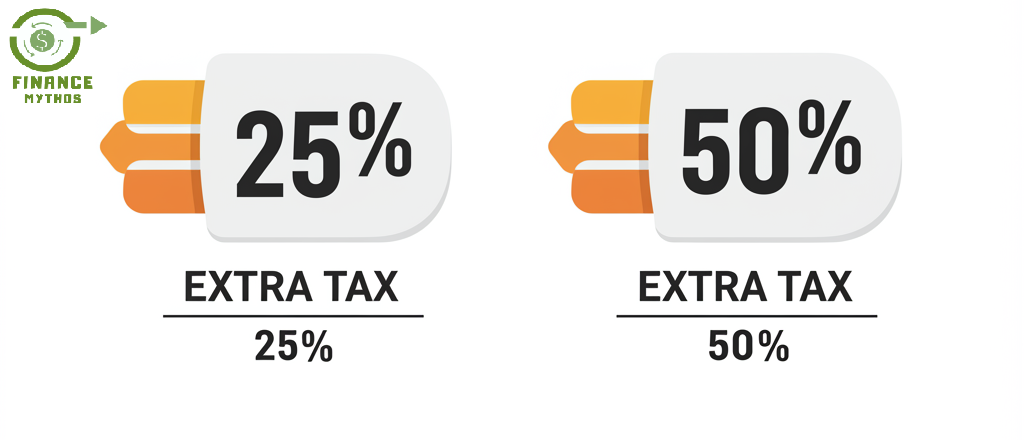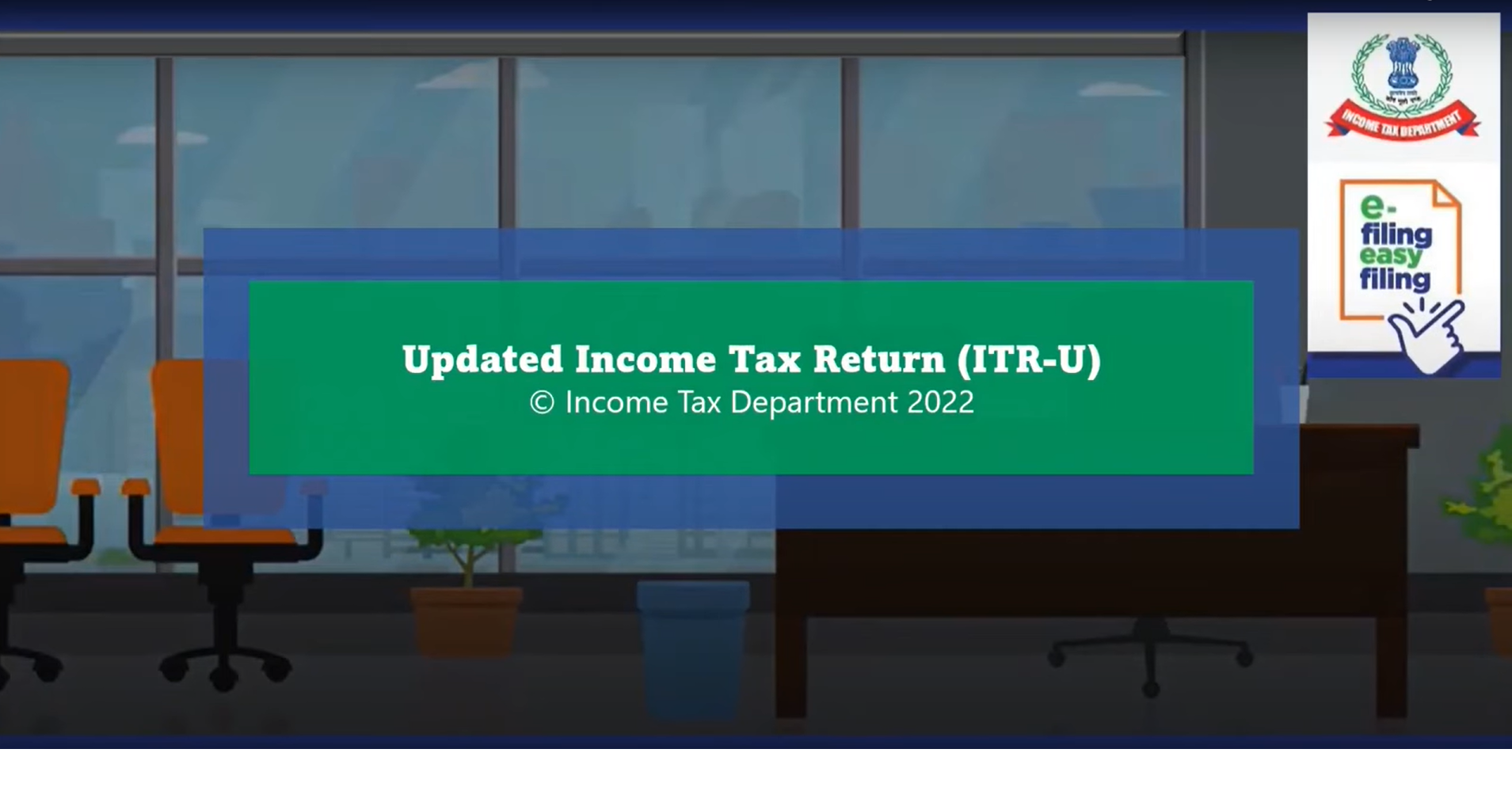Filing an updated Income Tax Return (ITR) is a useful tool for taxpayers who need to rectify errors or omissions in their previously filed returns. This new provision was introduced in the Union Budget 2022, providing taxpayers with the opportunity to correct mistakes and ensure accurate reporting of their income and taxes. Here’s everything you need to know about the process of filing an updated ITR.
Table of Contents
ToggleWhat is an Updated ITR?
An updated ITR allows taxpayers to file a correction to a previously filed income tax return. This provision enables taxpayers to fix any errors, omissions, or wrong declarations, especially if there were discrepancies in income reporting, tax credits, or the rate of tax.
Key Features of an Updated ITR:
- Timeline for Filing: Taxpayers can file an updated return within 24 months from the end of the relevant assessment year.
- Eligibility: Available for all taxpayers, irrespective of whether their previous return was filed or not.
- Correction Scope: Includes rectifying wrong income reporting, choosing the correct head of income, correcting tax rates, or addressing missed tax credits.
An updated ITR allows taxpayers to file a correction to a previously filed income tax return. This provision enables taxpayers to fix any errors, omissions, or wrong declarations, especially if there were discrepancies in income reporting, tax credits, or the rate of tax.
Who Can File an Updated ITR?
Any taxpayer can file an updated ITR if they find errors or omissions in their previous return. The updated return can be filed for:
- Unfiled Returns: If the initial return was never filed.
- Filed Returns with Errors: If there were incorrect entries, such as wrongly chosen heads of income or missed deductions, or if depreciation was not absorbed properly.
- Adjusted Tax Liability: If the initial return underreported tax liability.
Restrictions:
- An updated ITR cannot be filed if it results in a refund.
- If the return is declared null, no updated return can be filed.
- Certain proceedings, like search and seizure operations, prohibit filing an updated ITR.
Tax Regime and ITR Filing
It is important to choose the right tax regime when filing an ITR. Once the tax regime is selected for the year, it cannot be changed after the due date. Taxpayers can choose between the old or new tax regime depending on their income and deductions.
- Non-Business Taxpayers: Those filing ITR-1 and ITR-2 can switch tax regimes every year, but the choice must be made before the due date for filing.
- Business Taxpayers: For those filing ITR-3 or ITR-4, the tax regime can only be changed once by filing Form 10-I before the end of the relevant financial year.
When Can You File an Updated ITR?
The option to file an updated ITR is available for assessment years where the return has been filed but needs corrections, or if the return was not filed at all. For example:
- For Assessment Year 2021: An updated ITR can be filed to correct errors such as wrong income or missed tax credits.
- Limitations: An updated ITR cannot be filed if it reduces the total tax liability or leads to an increased refund.
Filing and Payment of Taxes

Steps to File an Updated ITR:
- Tax Payment: If you owe additional tax, make sure to pay it along with any applicable interest before filing.
- e-Filing Portal: Log in to the e-filing portal, select the appropriate form (e.g., ITR-1, ITR-2), and proceed to file the updated return.
- Additional Tax Payment: Taxpayers are required to pay an additional tax if the updated return is filed within 12 months from the end of the assessment year. The additional tax rate is 25% of the total tax and interest due.
- If filed within 12-24 months, the additional tax increases to 50%.
Step-by-Step Guide:
- Step 1: Download the ITR Excel Utility from the e-filing portal.
- Step 2: Fill out the utility form with correct income and tax details, and generate the JSON file.
- Step 3: Upload the JSON file to the e-filing portal after logging in and completing the necessary verification.
Can You File an Updated ITR Without Any Tax Payable?
If your total tax liability has been fully adjusted with TDS (Tax Deducted at Source) and you do not have any additional tax payable, you cannot file an updated return. An updated ITR can only be filed if additional taxes are due.
Filing ITR for Income Below ₹5 Lakh
Even if your total income is below ₹5 lakh and you have claimed a rebate under Section 87A, you can file an updated return. However, keep in mind that you will be liable to pay a late filing fee if the return is filed after the due date.
Additional Fees for Late Filing
When filing an updated ITR after the due date, taxpayers must pay an additional fee:
- Within 12 months: A 25% surcharge on the total tax and interest.
- Within 12-24 months: A 50% surcharge on the total tax and interest.
Payment Details:
Ensure to provide the correct payment details, including the BSR code, deposit date, serial number of the challan, and the amount paid while filing the ITR.
Conclusion
The updated ITR scheme is a valuable provision for taxpayers who need to correct any mistakes in their previously filed returns. By following the correct procedure, making timely payments, and understanding the various eligibility criteria, taxpayers can rectify their returns efficiently and avoid future tax-related issues. If you’re unsure about the process, refer to the Income Tax Department’s website or seek professional advice.
For detailed information, visit the official Income Tax e-filing portal.

Jugaad on Two Wheels: The Hilarious Bike Parcel Hack in Karnataka
The Great Karnataka Bike Parcel Hack: A Jugaad Masterclass #RapidoParcel: In a creative yet controversial move, ride-hailing platform Rapido has found a way around Karnataka’s

Denmark’s Digital Sovereignty Revolution: Linux and LibreOffice Lead the Way
Introduction to Denmark’s Bold Move In June 2025, Denmark’s Ministry of Digital Affairs made headlines by embracing digital sovereignty, ditching Microsoft Windows and Office 365

🏏Sports as a Business Strategy: Insights from Vijay Mallya’s RCB Ownership
🧠 Sports as a Business Strategy (Tool) In modern business, few platforms offer better engagement and emotional connection than sports. From football clubs in Europe

🙏 Apologies in Leadership: Vijay Mallya Public Apology
🧠 Introduction: The Role of Apologies in Leadership In the corporate world, apologies aren’t signs of weakness—they’re strategic acts of leadership. When made with sincerity

Audiobook Production Costs: Navigating Recording Artists, Studio Expenses, and AI’s Impact
The audiobook industry is booming, with over 130 million listeners in the U.S. alone in 2021 and a growing global appetite for audio content. Producing

Media Trial of Vijay Mallya: How Public Perception Shaped Vijay Mallya’s Legacy
Introduction: Media’s Influence on Business Narratives In today’s hyper-connected world, media narratives can make or break a business reputation. For Vijay Mallya, once known as

